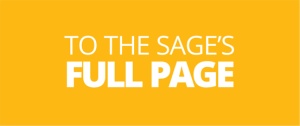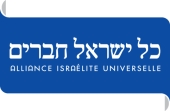Hacham Moshe Hai Cohen-Yazdi Aharoni was born to Miriam and Yitzhak in 1896 in Kermanshah, Iran. His family, which had left the city of Yazd to settle in the Land of Israel, settled in Kermanshah, as did many Jewish families on their way to Israel at the time.
He first studied Torah in the Hanna ktab [elementary school] in Kermanshah, and then continued his education at the Alliance Israelite Universelle school founded there in 1904.
Hacham Moshe Hai Cohen-Yazdi Aharoni was ordained to the rabbinate and was closely associated with the spiritual leader of the Jewish community at the time, the physician Rabbi Hakim Agga Jahn.
He married Mahi Hakimzada, a descendant of the Mashadi forced converts, who was his neighbor in the shared courtyard of the Kermanshah Mahla [Jewish quarter]. Hacham Moshe Hai initially earned his living from wholesale commerce and later handled the accounts of a large commercial firm. He had an expansive education and was fluent in many languages, including Persian, Arabic, English, French and German. He read current periodicals extensively and subscribed to the Zionist Movement's Ha'Olam journal, which was delivered to him Kermanshah.
In 1925, following the coup d'état in Iran and the rise of Raza Shah Pahlavi to the throne, the Jews were accorded equal civil status and their internal matters placed in the hands of their community and its rabbinic leadership. Hacham Moshe Hai Cohen-Yazdi Aharoni was active in the Anjumana Yehudian Jewish community committee, and oversaw its treasury. He also ran religious activities, led prayers at the synagogue and preached his sermons to the public.
In 1934, following a long period during which he worked towards strengthening religious studies in the Alliance Israelite Universelle school, his essay Pardess HaDat was published in Hebrew in Jerusalem, with the support of Alliance. That same year, Hacham Moshe Hai and several additional members of the community committee provided Jewish refugees from Russia who arrived penniless to Kermanshah with their basic needs for food and housing, sheltering them in their homes and public institutions.
In 1953, after his children had immigrated to the Land of Israel through the youth Aliya scheme, Hacham Moshe Hai Cohen-Yazdi Aharoni immigrated to Israel as well, settling in Tel Aviv. The harsh conditions of that period did not favor him and he found no employment. Just a few months before his death, he was accepted as a member of the Iranian Jews Association in Israel.
In 2017, the National Library of Israel recognized the collection of Hacham Aharoni's manuscripts as being of national value.
Hacham Moshe Hai Cohen-Yazdi Aharoni passed away on 13 Tishrei 5717 (1957) and was buried in the Kiryat Shaul cemetery in Tel Aviv. He is the author of Pardess HaDat – customs, laws and sermons for the Sabbath and Festivals.



